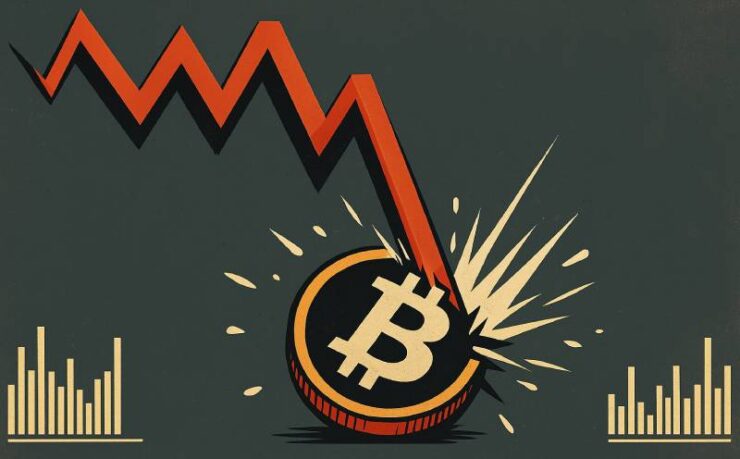CME Bitcoin futures opened sharply lower Monday after President Donald Trump ruled out a trade agreement with China, intensifying market turmoil. The April contract began trading at $79,590, down 5.6 percent from Friday’s close of $84,250, before declining further to $76,800, according to Google Finance.
The sell-off coincided with a broader market retreat. Dow futures dropped 900 points. Chinese equities plummeted. Japan’s stock market triggered circuit breakers. JPMorgan, S&P Global, and Goldman Sachs raised the likelihood of a U.S. recession this year. Bitcoin futures—widely viewed as a barometer of institutional positioning—reflected risk-off sentiment across global markets.
Trump, speaking to reporters aboard Air Force One on Sunday, said he would not move forward on a deal unless China addressed the trade deficit.
“Unless we solve that problem, I’m not going to make a deal,” he said. The president also noted that while he didn’t want markets to drop, “sometimes you have to take medicine to fix something.”
The administration recently unveiled sweeping tariffs impacting 180 nations. The levies on Chinese imports alone now total 54 percent. Trump framed the move as corrective action: “World leaders are dying to make a deal,” he said, insisting that economic pain is necessary for long-term gain.
Open Interest Declines in CME Futures
CME open interest—the total number of outstanding contracts—has fallen sharply. From a peak of 281,570 BTC in December, the figure has dropped to 140,500 BTC, its lowest level since August 2024, according to Coinglass data. The decrease points to declining institutional exposure and potential capital outflows from the bitcoin futures market.
In contrast, global and perpetual futures open interest, excluding CME, rose from around 400,000 BTC to 520,000 BTC over the past four weeks. The divergence suggests that retail and offshore traders may be positioning for a further downside. Rising open interest alongside falling prices typically signals an increase in short positions.
The sharp CME decline aligns with broader investor risk aversion. Institutional traders, particularly those using CME for regulated exposure, appear to be retreating amid escalating trade tensions and recession warnings.
Tariffs and Recession Fears Fuel Wider Market Slump
Market volatility extended far beyond digital assets. Major equity indices across Asia were hit hard. China’s stock markets experienced heavy losses. Japanese markets fell past key thresholds, prompting automatic halts in trading.
JPMorgan, S&P Global, and Goldman Sachs each revised their U.S. economic outlooks, citing the rising probability of a recession. The reassessments came after Trump’s announcement of global tariffs and his refusal to ease pressure on trade partners.
The administration’s tariff expansion, which includes levies on imports from nearly all trading partners, marks one of its most aggressive protectionist moves to date. Commerce Secretary Howard Lutnick, appearing with the president last week, displayed a chart of tariff impacts during the White House announcement.
As institutional interest in CME Bitcoin futures wanes, broader financial markets appear braced for continued instability.





